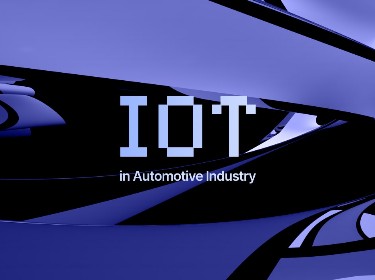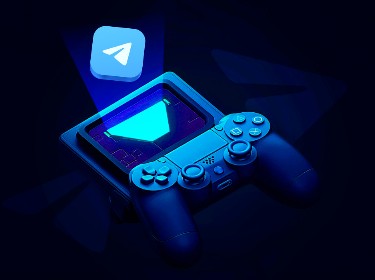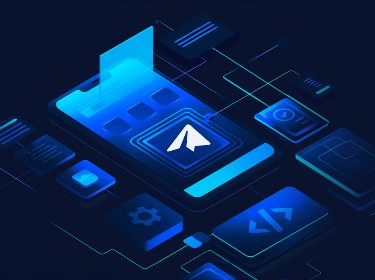Minimum viable product is a basic version of an application or a website ready enough to be put on the market. MVP helps businesses establish their virtual representation as soon as possible and make future improvements right in line with users’ feedback.
You have surely noticed that our world is rushing into the digital domain at breakneck speed. Developers are now busy with a never-ending inflow of orders. This creates great opportunities, but also puts pressure on the software development industry.
As clients often want to establish their digital presence as soon as possible, they expect to shorten the development time. But how do you keep the quality while cutting down on time? MVP helps to fix this tricky situation.
What is an MVP?
Minimum Viable Product (MVP) refers to a product with a minimal set of functions sufficient to be released on the market. Such a website or an application is capable of executing only basic procedures.
In essence, MVP is a bare minimum of the product’s potential, with new functionalities added in accordance with the received feedback. This is where the main purpose of an MVP is – to test the basic product in a real-life environment and gain relevant reviews to know exactly what direction to take in the upgrading process.
Moreover, building a minimum viable product helps a company to define the core set of the product’s functions and decide on the kit of instruments necessary for successful web development services implementation.
Even though MVP is a very basic version of the product, it must correspond to the notion of “viable”. MVP is meant to serve users’ needs and be helpful even at this stage of development.
“As you consider building your own minimum viable product, let this simple rule suffice: remove any feature, process, or effort that does not contribute directly to the learning you seek.” ― Eric Ries, “The Lean Startup”
What are the key benefits of MVP in software development?
![]()
Implementing a minimum viable product offers tangible benefits at all stages of the development process:
1. Release acceleration
Preparing a turnkey product for a market release can take a great deal of time. Meanwhile, MVP software development doesn’t take so long as there is not so much code and design. As practice has shown, an MVP can be released in 8 weeks while the development of a fully-realized project can take years.
2. Market validation
Deployed on the market, an MVP can show whether there is a place and demand for your product or the market is congested and the initial concept needs to be rethought. Based on the MVP results, you can further enhance your solution upon user requirements to make it more appealing and desirable.
3. Budget-friendly
A minimum viable product provides an opportunity to check the software’s tenability and relevancy without investing more than a minimal amount of money. What also saves money is that MVP requirements for design and functionality are looser than the criteria for the final product.
4. Fund-raising opportunities
Presenting investors with an MVP increases the chances of future financial support as they can analyze and test the product’s functions. What’s more, the initial user feedback will indicate whether the project has commercial potential, meaning that the investors can better estimate the chances of its future profitability.
5. Early testing
When launched half-baked, the product undergoes a software testing services procedure at the very first level, which makes it possible to detect bugs and fix them right away before they can affect future development processes.
6. Customer base establishment
A minimum viable product lays down the right conditions for the accumulation of a loyal customer base. As the project evolves, responding to users’ satisfaction and suggestions, it will foster trusting and mutually beneficial relationships.
MVP pitfalls
When it comes to MVP development you should be very precise about what needs to be done to launch a truly viable product. There are a number of mistakes you could potentially make but won’t as we warn you about them in advance:
- Over-complication
What does M stand for in MVP? Right, minimum. Don’t forget that the point of building software MVP is to present the project in the most basic configuration, able to perform simple but useful operations with no extra functionality. When you decide to pile on every function you can think of, it is no longer an MVP.
- Oversimplification
Try not to oversimplify your future product. The package of functions should be minimal, yet the product must be worth engaging with. It must offer practical solutions to the users’ requests.
- No prototype
Creating a prototype (or even a few) will help you to visualize the concept before the start of the development. It is better to agree on the design and key features of the MVP beforehand, as this reduces the time and money spent in the long run.
- No scalability preparation
Although your MVP is just a wee lad for now, its goal is to grow up strong and mature. For this to happen you need to ensure that with new functionality added and more people engaged into the product it won’t stumble but will work just smoothly.
You should wisely consider what type of architecture to choose for your project to attain scalability. In this respect microservice architecture is more advantageous than monolithic. With microservices each feature of the application is isolated and runs independently. Thus, it can be seamlessly scaled or updated without the need to meddle in the product’s other processes.
Want to know more about monolithic and microservice architecture? Don’t miss this article where we find out which is the best
- No monetization plan
Even if the minimum viable product turns out to be excellent, and popular among users, it needs funding to keep functioning. You should work out the monetization plan in advance to secure the ongoing improvements of the project.
Monetization plans will differ depending on the type of product you are offering. If your content is constantly updated, with new releases happening on a regular basis, a subscription is the best option to raise money.
You might choose to offer the users a time-limited Freemium version of your project. This way they are granted unlimited access to all features but after a given period have to pay to continue using it and to take advantage of full functionality.
Incorporating ads is another means of monetization. In this case you monetize through displaying ads on your pages. Users don’t even need to interact with them for you to generate revenue. This approach also opens up the possibility of offering users an option to pay for ads to be disabled.
- Disregarding the feedback
Users’ feedback is the driving force and the most important focus in software development. Do your best to implement their suggestions as, in the end, it is the users who decide whether the project will become a hit.
MVP vs Prototype
![]()
The main difference behind the concepts of MVP and prototype lies in the degree of completeness and functionality.
A prototype is a visualization of the idea. To build a prototype means outlining what the product will look like and how users will interact with it. A prototype can be anything from a sketch to an interactive wireframe.
Prototypes aim to figure out the best UI/UX patterns for the project and make improvements to the original concept.
In a nutshell, a prototype is a draft of an envisioned product while an MVP is the product itself but in the simplest, most basic version. A prototype is an internal mini-project that is not shown to the public. A minimum viable product, on the other hand, ventures into the outer world to collect reviews and become a bridge between the development team and the users.
“MVP is good enough, and can be improved to be great one day. Prototype isn’t good enough.” ― Alex Iskold, Founder and Managing Partner at 2048 Ventures
Ever mixed up MVP and PoC? Check this article where we examine PoC, leaving no room for confusion
How to develop an MVP
![]()
There are certain steps you should take to ensure the successful launch of a minimum viable product:
Step 1. Research the market
Knowing your market is vital. You should gather all relevant market data to receive actionable insights. Do you have any strong competitors in your niche? Is there any similar use case you can learn from?
You should also think about the ways in which people will get to know about your product. What advertising tools and channels will you use to reach the target audience and get them interested? And who is your target audience anyway? You need to do research and prepare a well-grounded marketing plan.
To collect the necessary information, you should examine market and industry reports, check out statistics, conduct surveys, and contact research and development services providers. It is also a good idea to investigate the failed cases in a related field so that you know what to avoid.
Step 2. Determine the key features and prepare the action plan
To clearly understand the desired functionality of your future product, you should start by making a list and pointing out a few must-haves – the features you will develop for the MVP. As this set of functions will be at the project’s core they must be truly useful.
Make sure that the developed features complement one another and function as a unified whole and not as a random mix. For example, if you create an MVP for a banking application it is better to focus on the realization of transactions and keep currency exchange data or business news for later.
As you are aware of all the pitfalls you may meet along the way, be very careful when working out the action plan.
The aspects specified in the plan must include:
- clearly defined timeframes
- the people responsible for the processes
- the tech stack
- the amount of money you are willing and able to spend
Step 3. Develop an MVP
Now it is time to start building your MVP.
Don’t fall into the trap of thinking that MVP can be of lower quality compared to the final version of the product. It should have much less functionality but the quality must be excellent. To build a valid MVP your team should fully understand the peculiarities and goals of MVP development and, preferably, have practical experience with similar cases.
Depending on the type of product (a website or an application), there are minor peculiarities in the MVP development process. If you build a mobile application, you will have to go through acceptance procedures to enter the app store. To be present both in the App Store and Google Play you need to master cross-platform app development technologies.
Looking for experienced mobile developers? The PixelPlex team is ready to bring all your ideas to life
Web MVP can be deployed faster, as no certification is required. But you should understand where the main traffic will come from. If your target audience spends the majority of its time on mobile devices, by launching a web MVP first you can lose a substantial amount of users. So return to Step 1 and make sure you know your audience inside out so you can make the right decision.
Step 4. Analyze the results and make the improvements
Shortly after the minimum viable product has been deployed and presented to the users, you can collect first-hand feedback. As we have said, you mustn’t ignore it even if the comments you get are rather negative. Users’ opinions and the way they see the product is the guiding light that will show you the right way to future upgrades.
Based on the feedback, you can evaluate:
- whether the UI/UX is intuitive and friendly for the users to navigate effortlessly
- what features users want to see next
- whether the product’s functionality works smoothly and fast
When the enhancements are made, collect the feedback once again. Repeat the cycle until you see that the MVP is ready to transform into a full-fledged product.
Top 5 MVP examples
![]()
What can be better proof of MVP development effectiveness than success stories about projects which began as start-ups and grew into mighty corporations? Let’s take a look at the products that were initially MVPs and went on to become overwhelming success.
Facebook (Meta)
The story of the pioneer of social media started under the name of “Facemash” when Mark Zuckerberg and his classmates at Harvard launched a platform to rank students of the university as “hot” and “not”. When Zuckerberg and his pals were accused of breaching security and violating individual privacy, Facemash was shut down and sold. Yet it marked the beginning of a world-famous platform which gained millions of active users.
The MVP for Facebook was released in 2004 and offered far fewer features than it has today. The service was originally intended to be open to Harvard students only, but as its popularity grew, more and more universities joined the platform. Eventually, Facebook became accessible to any person over the age of 13 with a valid email address.
Facebook MVP nailed certain key factors that secured its success. For one thing, the first raw version of the platform was released with a minimal set of features and provided clear solutions for its users. What’s more, at that time there were no similar products, which helped to boost interest in the platform and conditioned the flow of feedback.
Airbnb
These days Airbnb is a go-to for any traveler looking for accommodation options that bring them closer to locals. However, the path of the hospitality giant started with an MVP in 2008. At first, it was a minimalist website with the owners’ property as a lodging option.
The idea hit the jackpot as the first tenants signed up in a matter of days. In 2021, 98 million unique users visited the Airbnb website, which makes it the most popular platform for holiday and vacation rentals.
The success of Airbnb MVP was determined by a couple of factors. First, the platform offered a straightforward and unconventional solution to a common renting concern. Then, it achieved instant monetization due to the nature of the service offered. It also established a loyal customer base once the service proved itself to be highly relevant.
Amazon
The starting point of Amazon, the largest online retailer in the world, was also a minimum viable product. Its founder, Jeff Bezos, created a website selling books, music, and videos in 1997. As the platform steadily grew in popularity it began covering more and more product categories.
Over the years Amazon has added new services and functionalities, becoming a global titan with $468 billion in revenue in 2021.
Bezos made the right decision by choosing to stick to a limited stock of goods when Amazon was launched as an MVP. It meant he had the perfect environment for testing the viability and relevance of his idea, and could supplement the goods according to the consumers’ requests.
This helped him to save money on the initial phase, which he could then spend on the improvements that he knew for certain would work to the project’s advantage.
Uber
Now one of the world’s top transportation providers, Uber (formerly Ubercab) was initially a minimalist application allowing users to order a ride in black luxury cars in San Francisco only. The company gradually expanded, opening new branches all over the world.
There are currently 93 million people using the Uber app on a monthly basis.
The prosperity of Uber is founded on the well-thought-out MVP. The initial launch helped to confirm the public demand for the product and enabled the business to learn from the feedback, which then allowed the project to cover a wide international customer base.
Spotify
Spotify is the leader in the online music industry, with 381 million active users in 2021. But it was not always like that.
Spotify managed to cater to the needs of both music lovers and musicians, providing a reasonable charge for the unlimited flow of music for the former and a great platform for self-promotion and monetization for the latter.
Thus Spotify managed to build a strong community of active users alongside fixed monetization. This was possible because the development team acted on feedback and in-app user behavior.
All these projects share very important features. They provide powerful solutions driven by users’ feedback, and were perfectly timed to fill a gap in the market. These are the aspects you should explore during MVP product development to ensure your idea likewise turns into a massive success.
MVP success stories from PixelPlex
At PixelPlex we consider MVPs an excellent way to check out how the product will show itself on the market and the best technique for first-hand feedback collection.
Now let’s take a look at some of the PixelPlex projects which started as MVPs:
Green Hypermarket
We are very proud of our work for Green Hypermarket , one of the biggest chain stores in the Republic of Belarus with 5 thousand employees. Since its establishment in 2014, the company mainstreams sustainable consumption and healthy eating habits.
PixelPlex team created and launched a fully-operational MVP of Green e-store in just 8 weeks.
First, our business analysts conducted deep research into the market and the target audience, alongside outlining the strategy for commercial efficiency. When the stakeholders made the decision to build an MVP first, the teams of designers as well as Android developers and iOS app development specialists worked out a valid prototype which served as the basis for the future product.
Once presented to the public, the MVP collected a great deal of feedback which was quickly processed by the QA team to make the necessary improvements and updates. The engineers made sure the project will face no scalability problems by opting for a flexible architecture which enables the addition of new features with no interference in the workflow of the product.
Going digital helped the client achieve a high level of user engagement and retention, resulting in considerable revenue growth and an increase in the number of partnerships. With the MVP launched first, it was possible to enter the market sooner and make necessary transformations, reacting to the needs of the users so that they get the best solution.
As the web MVP became a hit with users, PixelPlex extended the project with a mobile app. Now it is possible to place delivery orders or look through in-stock products on any platform. At the time of writing, downloads have reached 118,5K (115K via Google Play and 3,5K via App Store).
Flact
Flact, a Hyperledger Fabric-based solution for document management, is another product developed by PixelPlex. As Flact is built on blockchain technology which is still developing and thus can be unpredictable, we decided to start with a minimum viable product and test it in a real-world environment.
First of all, our team of developers ensured a high level of scalability by building the product with flexible architecture so that any modifications and updates could be done easily.
Due to the need to process documents fast, our engineers decided to opt for smart contract development to facilitate the document flow.
The client placed an emphasis on strong security measures, as Flact deals with signatures and voting. To protect sensitive data we ensured that the history of voting and messages were stored immutably on the ledger alongside a multi-tier access restriction system.
What’s more, our UI/UX design company did a great job on Flact to make the design intuitive and friendly. A confusing interface is the last thing you need when dealing with important documents.
As a result we created a fully functioning MVP, successfully helping to manage paperflow more efficiently and to ease the decision-making process. Now our team is busy adding new features and functionalities to the platform.
Conclusion
Building an MVP is a wise strategy that not only helps to save time and money but also provides useful insights on how to improve the original idea. Although MVP development may at first seem like an extra step that can be omitted, in the long run it helps the entire range of processes: the collected data helps you to filter out the irrelevant concepts and focus on what is truly important.
Looking for an experienced team delivering custom software development services and turning your ideas into reality? Our team can boast vast experience in developing a wide range of products and services, some of which started out as MVPs.
We also specialize in accessible web development, ensuring that your solutions are inclusive and meet the highest accessibility standards. Contact us at PixelPlex to get high-class consulting and development services, and realize your envisioned project in the best way possible. Don’t hesitate when it comes to rolling out your idea: we are ready to assist you right away!”




